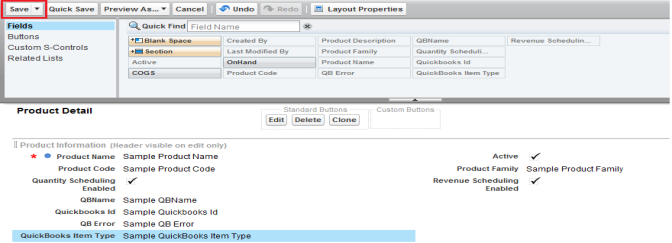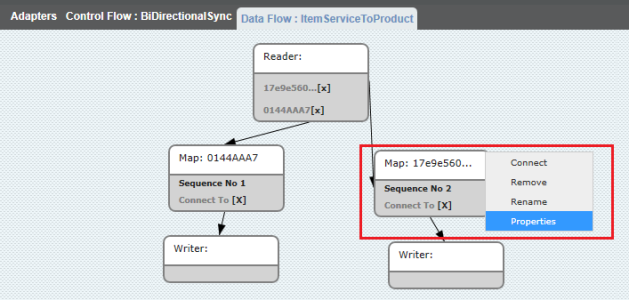2022
Integration from Quickbooks to Salesforce
- If you use Product Hierarchy in QuickBooks, then Salesforce needs to be updated to support product hierarchy. A Screenshot for product hierarchy in QuickBooks is shown below.
- In the previous screenshot DBSync is the parent for SF2QBDesktop and SF2QBOnline. Now if you generate an invoice in QuickBooks with DBSync and SF2QBDesktop, Item Name for DBSync remains DBSync but for SF2QBDesktop it is shown as DBSync: SF2QBDesktop. A screenshot for the same is shown below.
- If this invoice is moved to Salesforce Opportunity, then product is migrated with the parent Name into Salesforce.
- To make changes, go to https://login.salesforce.com/ . Enter you User Name and Password and click on Login. The user should have administrative privileges to make changes to Salesforce instance.
- Go to Setup ?Customize?Products?Fields and click on New in Products Custom Fields and Relationships.
- Select Text in the Next page and click on Next button. Enter Field Label as QBName, Length as 255 and Field Name as QBName, click on Next button.
- In the next screen select field level security for profiles and click on Next. Check Add Field check box and check Layouts you want to add it to and click on Save.
- Go to Setup ?Customize ?Products ?Page Layouts. Click on Edit for Product Layout.
- Add QB Name fields on to the page Layout. And click on Save Button.
- Go to www.mydbsync.com/user/login and enter your user name and password and click on Login.
- Click on Launch Button to Launch DBSync integration console.
- Click on Edit under Manage to Launch the Process Builder screen for your integration profile.
- Double click on BiDirectionalSync process on the right hand side.
- Once inside the process builder page, double-click on the State "ItemServiceToProduct" to open the data flow window.
- Once inside the "ItemServiceToProduct" state, right-click on the "Sequence No. 2" box and select "Properties" from the menu as illustrated below.
- Click on "Edit" link for " ********_map.xml"* to open the mapping in a new tab or window.
- Add the mapping QBName__c = VALUE("FullName") and save the mapping.
- Similarly add the above mapping in the following States to complete the product hierarchy setup.
- ItemInventoryToProduct
- ItemNonInventoryToProduct
- ItemDiscountToProduct
- ItemOtherChargesToProduct
- ItemInventoryAssenblyToProduct
- ItemSalesTax2Product
- Now your Salesforce is configured to handle product hierarchy of QuickBooks.
Integration from Salesforce to Quickbooks
- If you have Parent-Child relationship for Products in Salesforce, then the following changes needs to be made to the mappings.
- As mentioned in the earlier section, go back to the Process-Builder page by double-clicking on the BiDirectionalSync process on the right hand side.
- Open the OpportunityToInvoice state and right-click on the Sequence No 3 box and select Properties from the menu.
- Click on "Edit" link for " ********_map.xml"* to open the mapping in a new tab or window and make the following changes in the mapping window.
- Find target field "ItemInventoryAddRq/ItemInventoryAdd/Name" and replace the source code by copy-pasting the following. IF(EXACT(VALUE("PricebookEntry/Product2/AVSFQBQuickBooks_ItemTypec"),"ItemInventory"),RSPLIT(VALUE("PricebookEntry/Product2/Name"),":"),""). A screenshot below shows the same.
- Add the mapping ItemInventoryAddRq/ItemInventoryAdd/ParentRef/FullName = IF(EXACT(VALUE("PricebookEntry/Product2/AVSFQBQuickBooks_ItemTypec"),"ItemInventory"),LSPLIT(VALUE("PricebookEntry/Product2/Name"),":"),""). A screenshot illustrates both the mapping changes.
Overview
Content Tools














